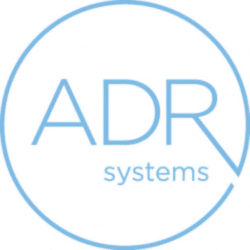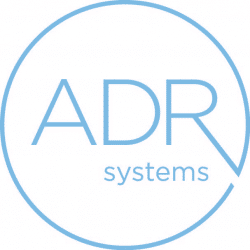Remote and in-person alternative dispute resolution (ADR) are two sides of the same coin. Many mediators—our panel of neutrals included—have been resolving personal injury, commercial and family law disputes through both formats for several years now. At first, when COVID-19 raged and remote proceedings were novel to everyone, some of our neutrals intuited a slight loss in what some dispute resolution scholarship has called “the human factor”—the camaraderie and spontaneity of in-person interaction, as well as the potentially clearer chance to read body language and non-verbal cues. As time has passed, however, they have found—as others have—that it is more than possible to build trust with parties, facilitate settlement negotiations and engage with attorneys on the substantive issues of a case just as effectively in remote settings as they would in person. ADR Systems’ continuously high settlement rate of 91% bespeaks that fact.
Arbitrations are particularly conducive to remote formats. Colleagues at ADR Systems exposited on this point early on in the pandemic in the Chicago Daily Law Bulletin: “The composite pieces of an arbitration — opening statements, direct and cross-examination of witnesses, closing statements, the requisite documents provided to the arbitrator by both snail mail and over email — can be accounted for without meeting in person.” Even highly complex arbitrations involving multiple witnesses and attorneys in different time zones and voluminous briefs with numerous exhibits can be effectively arbitrated remotely with careful logistical planning.
Mediations, too, can function just as well when convened remotely for cases of varying size and complexity. In remote mediations, virtual, private breakout rooms replace conference rooms for private caucusing. In fact, those virtual rooms may even be more secure than a drywalled conference room. On videoconferencing platforms like Zoom, parties cannot access or accidentally overhear conversations in a virtual breakout room to which they are not assigned, and only the neutral who is hosting the session can move between breakout rooms. Moreover, parties can dialogue with their mediator just as they would in person, display exhibits from submissions, move into other breakout rooms for conversations between just the mediator and counsel, and memorialize settlement agreements via recordings and e-signature tools while still gathered together.
All this being said, remote and in-person alternative dispute resolution, like the two sides of an actual coin, do look different and feel different. These differences are most consequential when parties are preparing for their session or hearing.
When parties mediate or arbitrate in person, they agree to do so at a specific location—very often the offices of an ADR provider, conference rooms within a local bar association or even a neutral’s home. Travel time by plane, train and automobile is factored into the planning of the day’s session or hearing, and counsel must confirm that all those due to be in attendance for their side—especially those with settlement authority—have the session location’s address and parking information. At the location, parties may require a Wi-Fi password for their laptop or help connecting their device to a display screen.
But when parties mediate or arbitrate remotely, logistics differ. Planes, trains and automobiles cannot take one to a mediation or arbitration session happening in cyberspace; there is no address to a location, only a clickable link, Meeting ID and passcode. For that very reason, remote dispute resolution proceedings have been touted as more geographically convenient, emotionally comfortable and accommodating to the schedules of decision-makers and persons with authority. Parties and counsel can participate from their homes and offices and do not need to sacrifice the time and cost needed to travel somewhere for a mediation or arbitration.
These advantages aside, because remote dispute resolution involves a different modality, and because confidential client information will invariably be discussed through the videoconferencing interface of an outside vendor, counsel should understand how they and their client will access their session safely, how their alternative dispute resolution provider will safeguard the confidentiality and privacy of their session and how any settlement agreements will be memorialized. In an article published by the Women’s Bar Association of Illinois, colleagues at ADR Systems offered these recommendations, among others, to counsel as they prepare for remote mediations and arbitrations:
- Review ethical obligations regarding confidentiality, technology competence and the usage of cloud-based tools in legal practice
- Request a platform demonstration to become familiar with the application’s interface and test devices beforehand to confirm they can connect with video and audio
- Update the videoconferencing application if previously downloaded to ensure the software is fully patched
- Scrutinize how the ADR provider will leverage the application’s security settings to control the session and limit user capabilities such as screen and file sharing
- Read the platform’s terms of service to understand how it protects confidentiality in accordance with ethical standards relating to cloud-based and third-party vendors
- Confirm the procedure for memorializing a settlement agreement and how it will be confidentially preserved and, even, disposed of in time
Remote dispute resolution is, practically speaking, a variation of form. Because it adds a technology component, preparing for a remote session—at least for the first time—requires attention to details and considerations that simply do not apply to in-person sessions. The differing logistics aside, the session is functionally the same. Whether the walls of their breakout or hearing room are coated or coded, parties can gather in them to resolve disputes to great effect.
ADR Systems, It’s Settled.®




